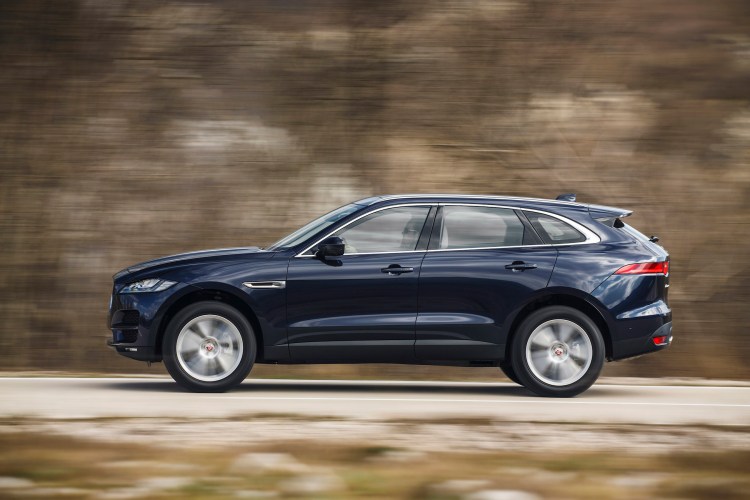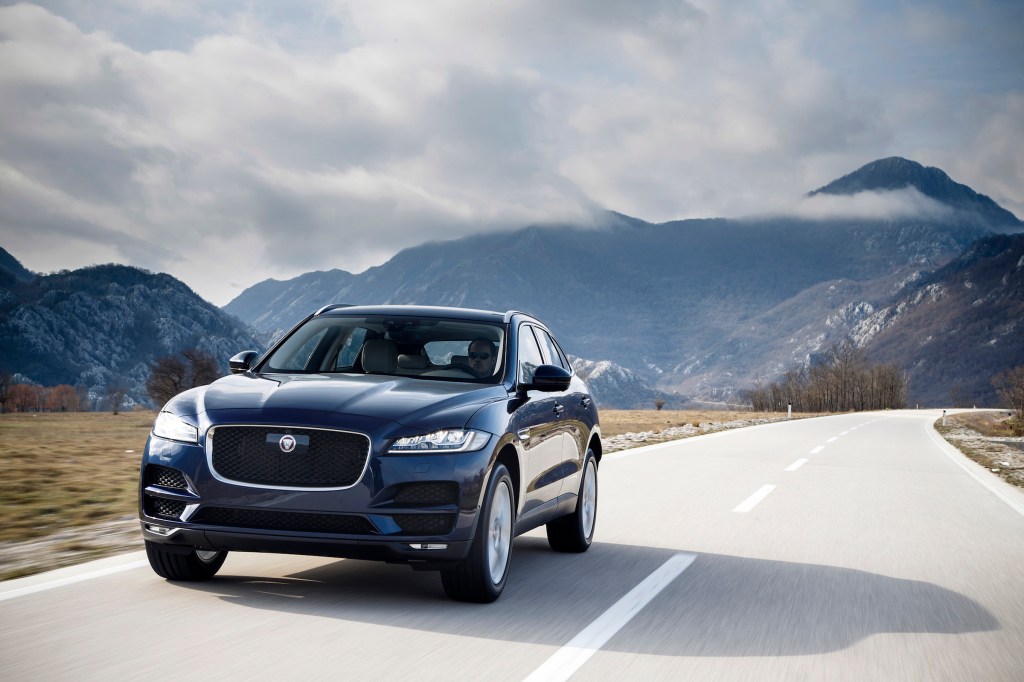How I pity the luxury SUV shopper.
The market is flooded with well-designed, well-built, upscale cars. Between the options offered by BMW, Audi, Lexus, Acura, Porsche, Mercedes-Benz and others, every aspirational car company has a suitable SUV for sale.
On the lower end, Volkswagen and Subaru are getting ready to present new SUVs. On the high end, Bentley now offers the Bentayga, Alfa Romeo has the Stelvio and even Lamborghini is prepping its Urus SUV for a late 2017 debut.
They’re all so good that figuring out which are better or the best is really a question of personal taste.
Jaguar is the latest to jump in with its take on the suburban people mover. And it’s a contender.
The 2017 F-Pace lands somewhere in the middle of the pack. Neither the priciest nor the highest-performing, it’s a good combination of good looks, luxury comfort and cargo capacity.
Outfitted with all-wheel-drive, and driven through an eight-speed automatic transmission by a 3.0-liter supercharged V-6 engine, the F-Pace sets a pace around town. Nimble and quick, it feels smaller and lighter than it looks – or than its broad, roomy interior would suggest.
The engine, which makes 380 horsepower and 332 pound feet of torque, feels powerful and responsive, and when pushed delivers a sports car exhaust note.
The all-wheel-drive system, and its adaptive dynamics, torque vectoring and agile suspension, manage cornering well. The “dynamic” drive mode kicks up the torque and tightens the handling.
But it’s also very comfortable, and loaded with luxury features that might have driven the MSRP higher.
Head room and leg room, front and rear, are class-leading. (One passenger declared the back seat had more room than any SUV she’d ever ridden in.) The rear seats also have their own device plug-ins and climate control.
The F-Pace offers the requisite cargo space, too. With the rear seats folded flat, the car could accommodate a half-dozen golf bags, a suite of snowboards or a brace of mountain bikes.
Its manufacturers put the towing capacity at 5,290 pounds, enough to haul a lightweight camper, trailer or boat.
Standard features include 14-way adjustable heated seats, heated steering wheel, keyless entry and ignition and 20-inch wheels, plus helpful driver assists like rain-sensing windshield wipers, lane-departure monitor, blind spot monitor and rear-view camera.
(Options included on the model I drove were heated rear seats, a tailgate that opened with the wave of my hand, upgraded instrument screen and sound system, and a heads-up windshield display.)
Also standard are a couple of amenities whose appeal is hard to determine. At night, a bright circle of light, reading “Jaguar,” appears below the doors. Also, the dial used for gear selection retracts into the center console when the engine is turned off. That’s cute, but … why?
Jaguar calls the F-Pace “the ultimate practical Jaguar sports car,” which seems to include a lot of qualifiers.
In design, it is sportier than sister company Land Rover’s off-road-ready vehicles, but more rugged than Jaguar’s XE or XF sports cars – with which it shares engines and architecture.
Some consumers will worry whether it also shares quality control issues with past Jaguars, which suffered from what some wags call British Car Disease.
The current ownership by Indian automotive giant Tata has made several good-faith efforts to combat that. Last year, the company began an aggressive campaign to include more upscale features in base models of its cars, without raising the prices.
But the review by Consumer Reports was mixed.
That publication gave the F- Pace high marks for acceleration, braking, handling and overall owner satisfaction, but branded it with a “worse than average” rating for predicted reliability.
Despite those concerns, and the daunting competition, Jaguar has already done well with the F-Pace. A Jaguar representative said its sales doubled last year and largely credited this vehicle, which became Jaguar’s No. 1 model the first month it was offered, selling more units in June 2016 than the total number of all cars Jaguar sold in that entire month the previous year.
For 2016, more than one-third of all Jaguars sold were F-Paces, though it didn’t make its debut until June.
Jaguar said it has seen no loss of sales from other models, which means the F-Pace may be taking buyers from Audi’s Q5, BMW’s X3 and X4, or Mercedes-Benz’s GLC.
The MSRP probably helps. While the higher trim S class F-Pace starts at $58,695, an F-Pace with a smaller engine and fewer amenities can go for as little as $42,985. That’s competitive with the Audi and BMW equivalents, if a little more than a stripped GLC, but a lot less than a Porsche Macan.
The current California weather conditions may help 2017 sales. The ongoing onslaught of rain and snow could persuade some car shoppers that they need a four-wheel- or all-wheel-drive vehicle just to get around town.
If so, the F-Pace makes a good choice.
Send questions/comments to the editors.




Comments are no longer available on this story